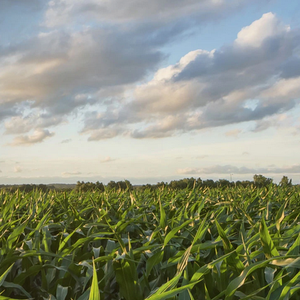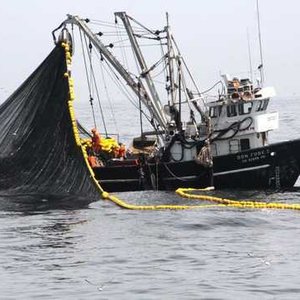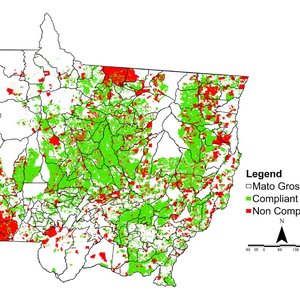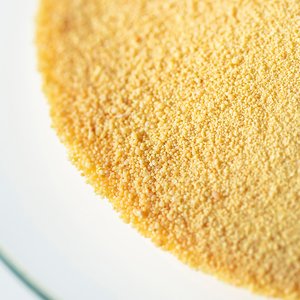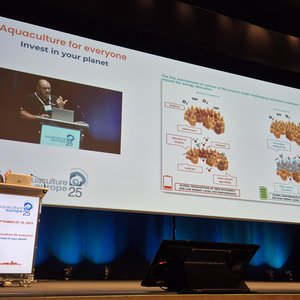Based in Denmark with operations in Canada and the US, Satavie was the winner of the Soy Innovation Challenge. The company supplies a soy protein concentrate from soybean meal utilizing a patented water extraction method that ensures high levels of digestibility, improved nutrient absorption, and increased feed conversion rates ideal for swine, poultry and aquafeed.
The soy protein concentrate is already produced in Denmark and commercialized in Europe. “We have some customers in Canada and saw the success through the European pig and poultry market, particularly in Spain, France and Denmark. We found that the product would need a company on its own for our US operations, and that is where Satavie comes from. It’s a collaboration of a Danish company and some partners, and initially, Satavie will be the sales and research arm,” Lasse Jakobsen, president at Satavie, told Aquafeed.com.
The method
The patented method is a water-based filtration process, not an acid wash or fermentation process that is typically used in other soy protein-concentrated methods. There is a minor pH balance at the beginning to equalize the product and create a suspension. Then, it goes through several flushing mechanisms where it can separate soluble and unsoluble fiber proteins. It takes around 50% of the product away and creates a molasses stream that can be used in bioreactors. Depending on the type of soybean meal it brings in, it ends up with 68-69% soy protein concentrate with high digestibility. The process also washes antinutritional factors out and has a low ash content.
“We recycle the water many different times. The wastewater ends in the molasses stream and we continue using it on the flushing side. There is no high heat and that is why we preserve the protein, there is no browning effect – a consequence of cooking the proteins – and no acid wash. To sum up, it’s a gentle process,” Jakobsen said. The processing facility also uses heat recovery and Satavie would like to replicate this unique facility in the US.
Applications in animal feeds
The extraction method ensures high levels of digestibility. The company tested it in infant piglets and found that, even at those early stages, the digestibility was 94-95% with all the downstream effects.
The product has also a unique characteristic, its acid buffering capacity. “It has been tested in pigs that it has a negative ABC-4 value so it aids in the balancing of the diet, meaning the stomach has to produce less acid during digestion,” Jakobsen said.
There has been little work done in the aquaculture space but the company is confident that, from what they have seen in other monogastric species, the product should work well in aquafeeds. “We are looking for strategic partners to test the product against other protein sources and show its value. We would be happy to see if the same benefits apply on the aqua side,” Jakobsen said.
The market
Animal-grade and food-grade soy protein concentrate have different qualities and levels of protein content and the company aims to be in the middle of that spectrum. “The product after the process is food-grade and with the ABC-4 values, it could be a premium but we aim to be in the middle while adding those extra values to have a superior product,” Jakobsen explained.
Currently sold in Europe, Satavie is looking at the market in the US. “Today Danish companies are buying soybeans and soybean meal in South America that are being shipped up to Denmark where they are processed and then shipped back to the U.S.,” said Jakobsen. “It makes more sense to process the protein where it’s being produced, hereby extracting more value.”
The $100,000 awarded to Satavie by the Soy Innovation Challenge will be used to scale the company, verify the product in-market and start to build a customer base in the US. “We are in a unique situation where we already have the commercialized product and with the grant from the Soy Innovation Challenge, we could initiate the first sales from Europe. We can do that in a minimal margin to cover costs and start to build the business,” Jakobsen explained.
“As soon as we have a couple of partners in the U.S. using the product, there is a pathway to set up a facility in the U.S.,” Jakobsen said. This model could be replicated elsewhere, but that is not on the agenda yet.
Satavie is a protein solution company. It takes soybeans and creates a quality protein with an efficient process that can either go to animal feed or human food. The company is currently focused on pig, poultry and aqua is there too. “We are starting small to keep focus, working within the areas we know well and we will see where the future takes us,” Jakobsen concluded.




